Steady state simulation results
Under construction. These results were obtained with the previous iteration of the model, which did not model the outer reflector. We will update them shortly.
We report here the steady state results of this coupled multiphysics simulation.
The power distribution peaks near the outer graphite reflector in the axial center of the core, the fluid temperature distribution peaks near the outlet, roughly near the middle of the active cylindrical shell. The solid phase temperature peaks in a similar location, while the UO phase in TRISO peaks closer to the maximum of the power distribution. This shows the importance of multidimensional simulations to evaluate fuel performance during a transient, as 1D models cannot resolve both the axial and radial characteristics of each profile. The reader should note that the real Mk1 PB-FHR geometry features a large flow channel near the defueling chute, which would naturally lead to more cross-flow towards the outside of the core.
The pressure drop is larger than computed in (Novak et al., 2021), and further investigation should reconcile the two models. It is likely that the absence of bypass flow in the FV model, plus the use of purely axial inlet and outlet boundary conditions, is the cause of the discrepancy.
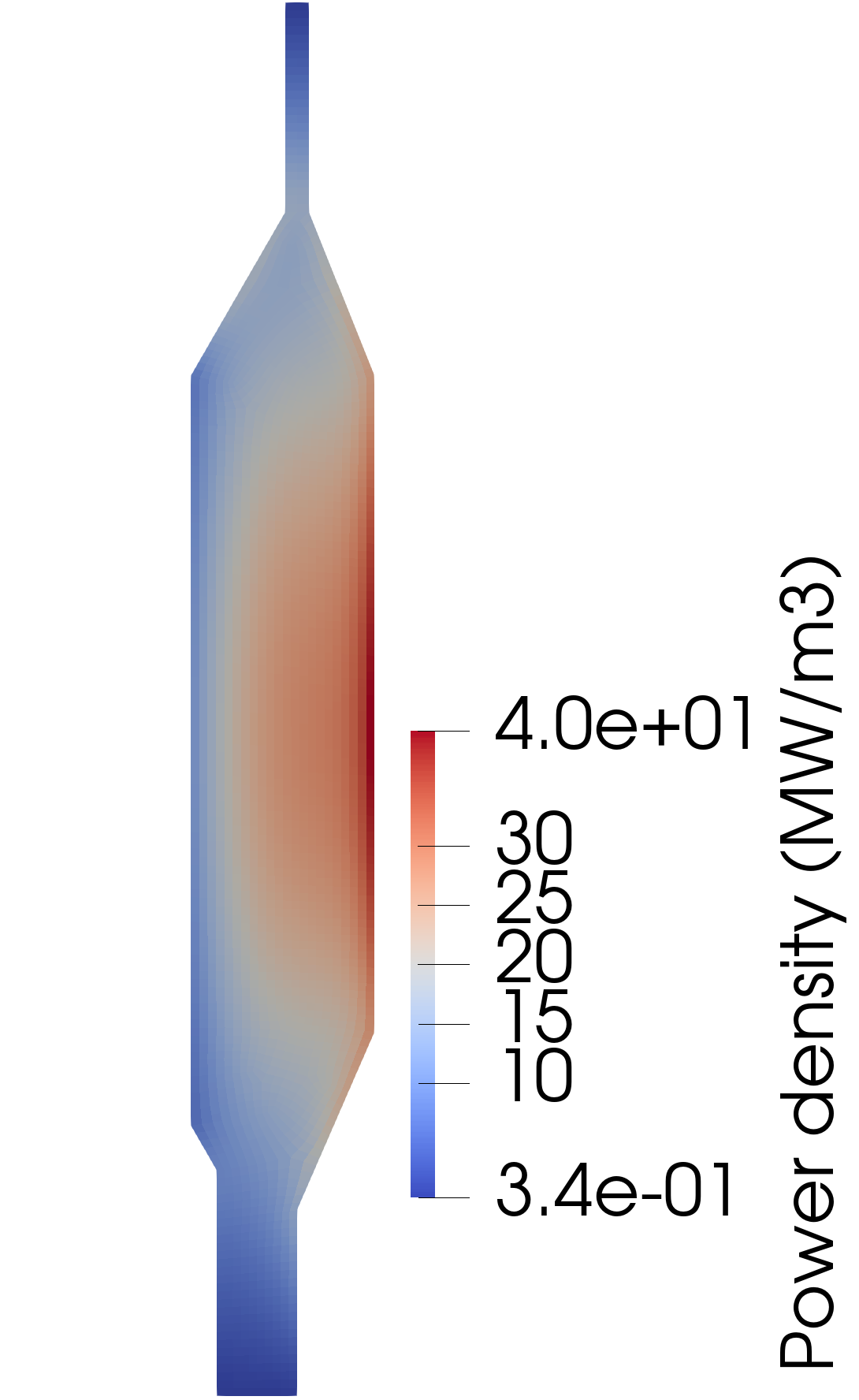
Power distribution
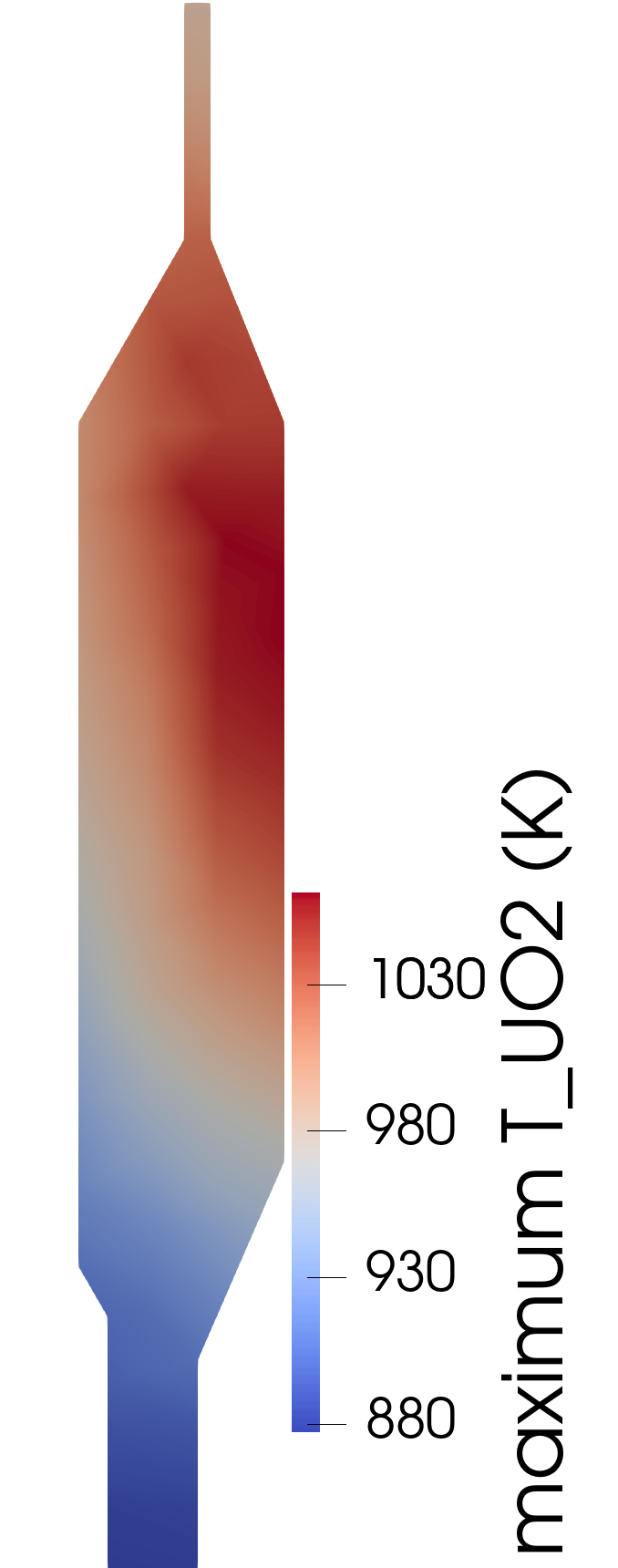
UO temperature
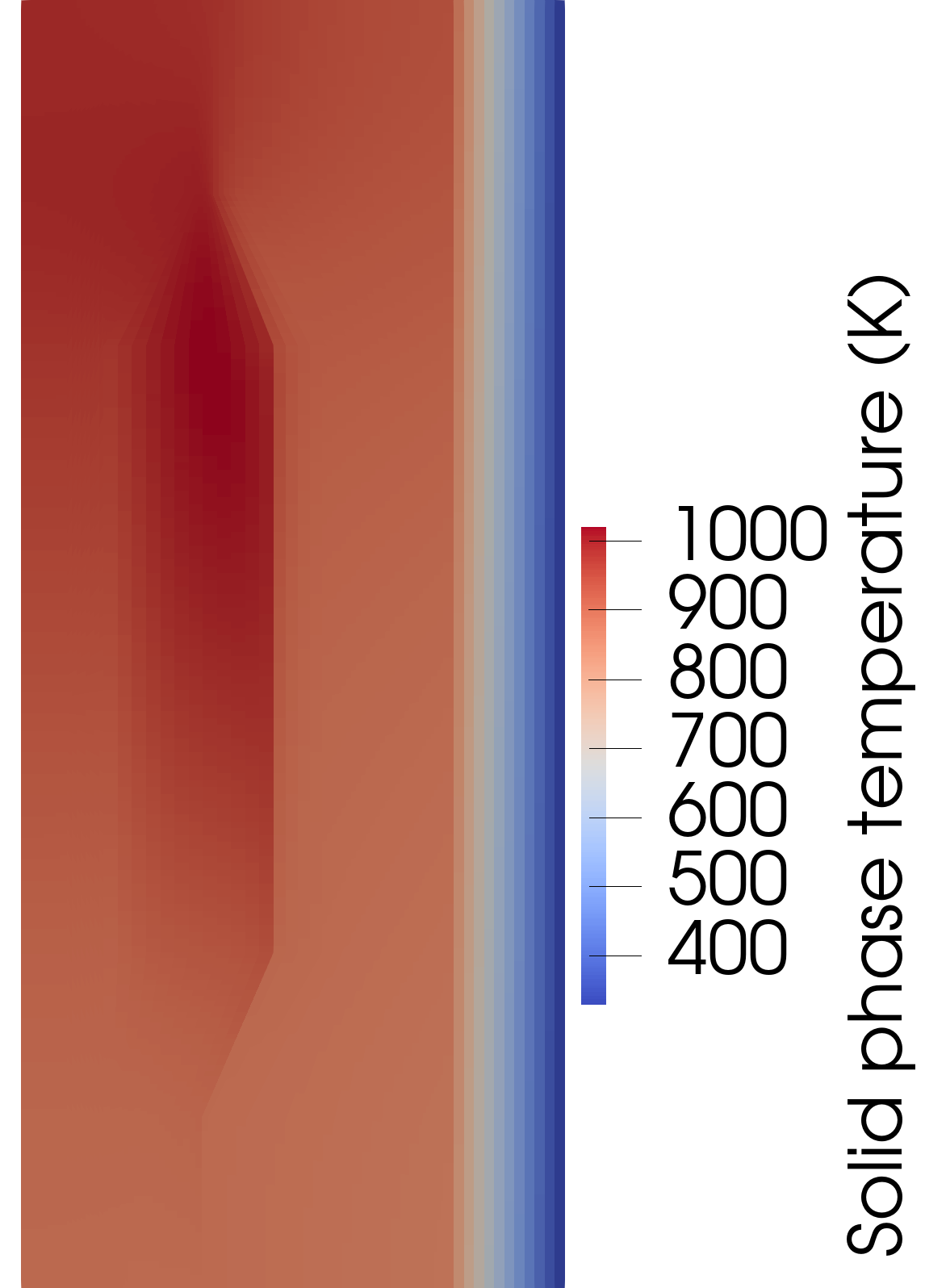
Solid phase temperature
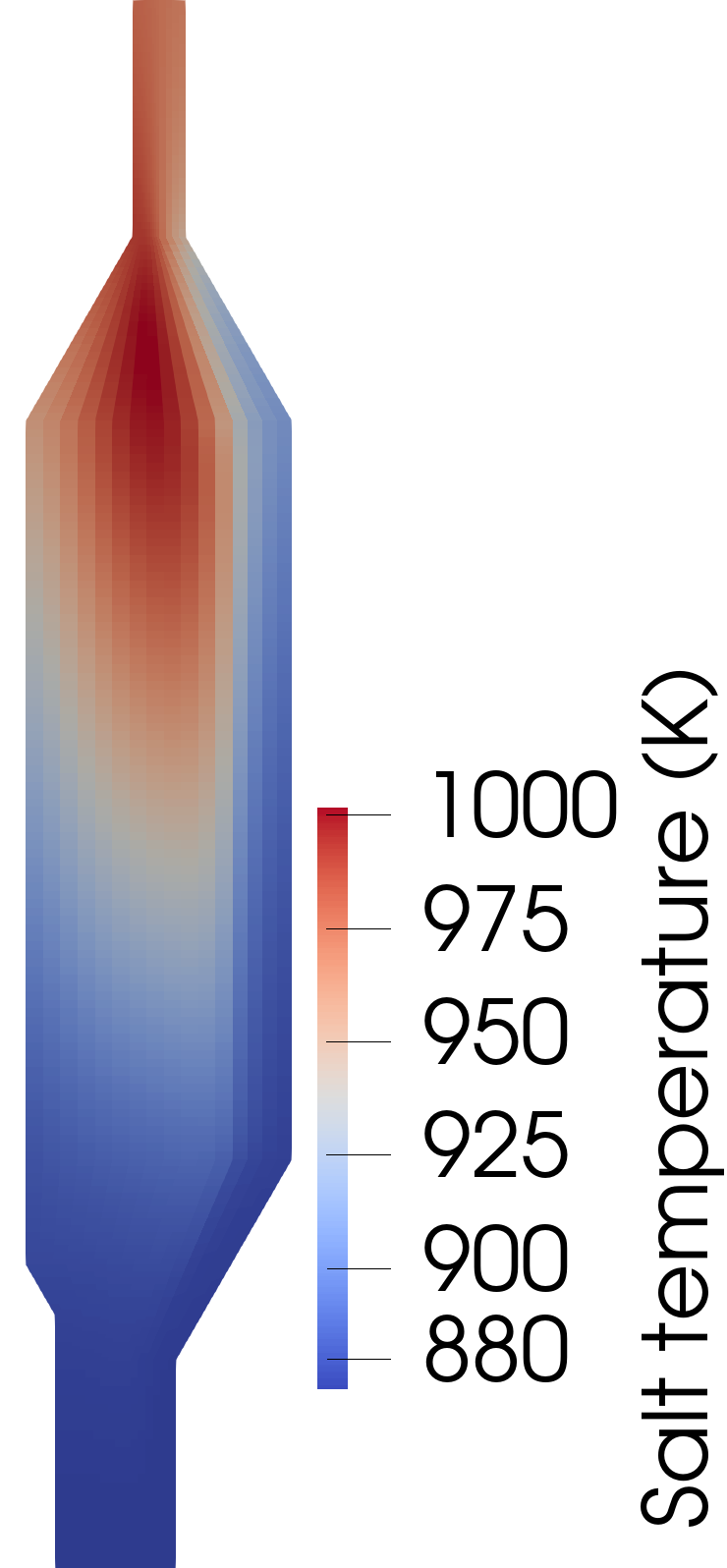
Salt temperature
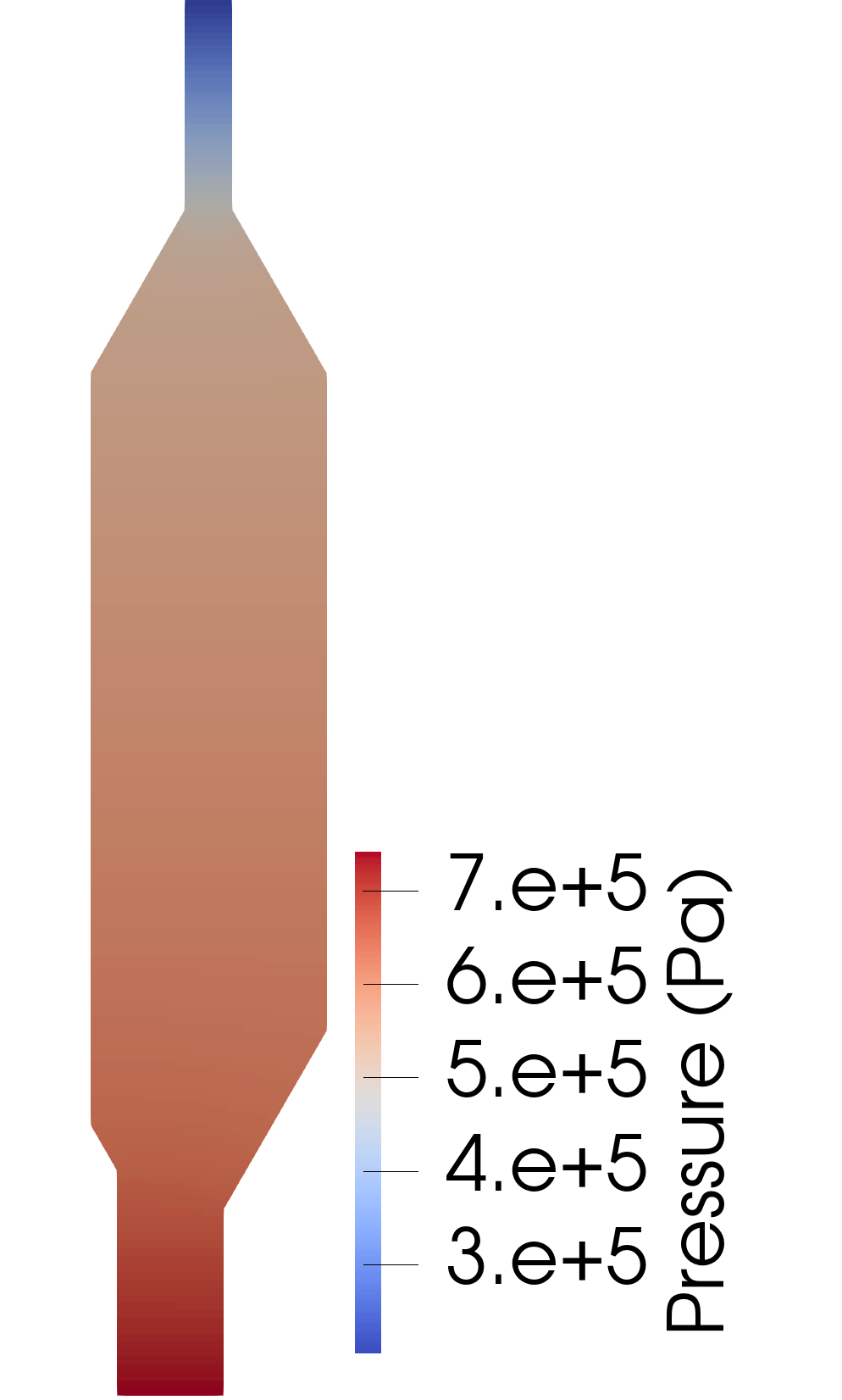
Pressure
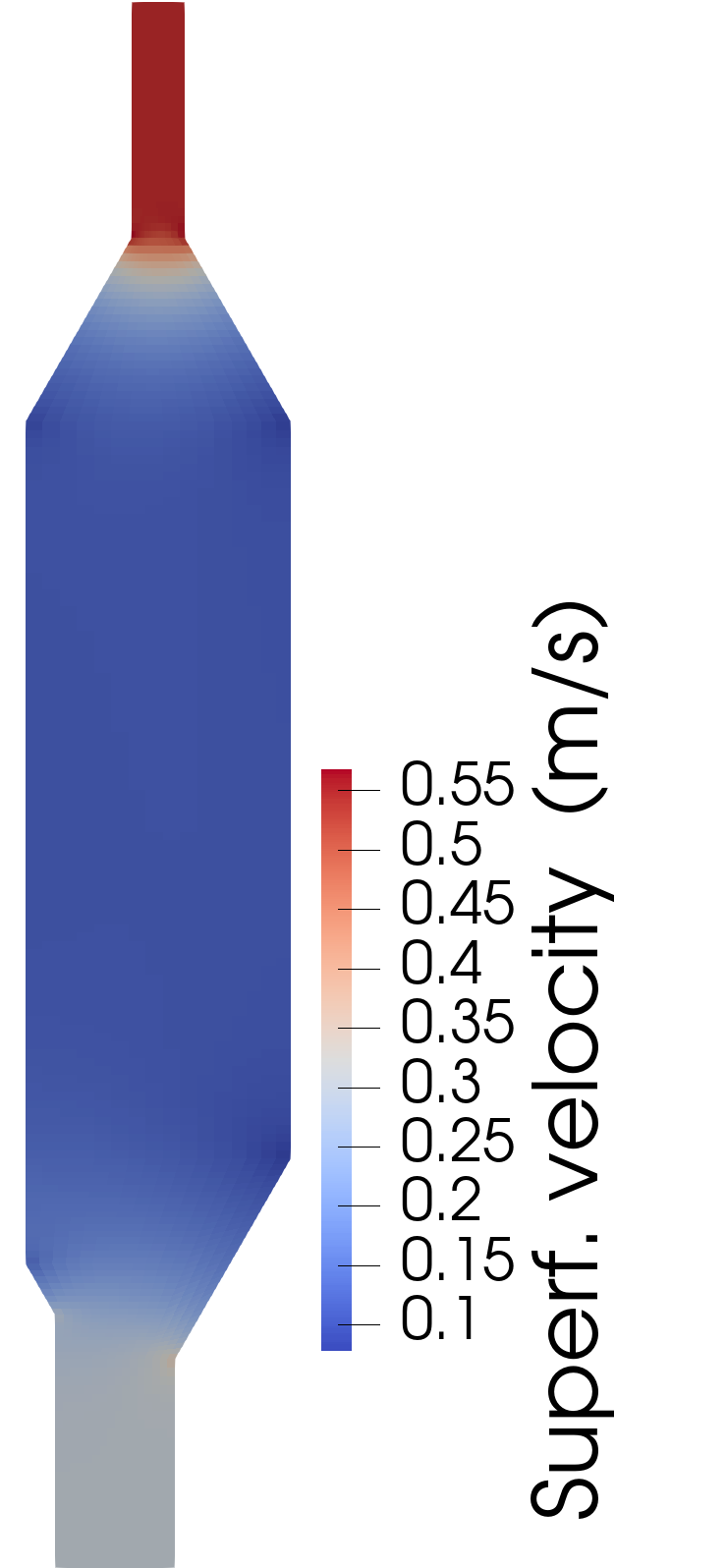
Superficial velocity
References
- A.J. Novak, S. Schunert, R.W. Carlsen, P. Balestra, R.N. Slaybaugh, and R.C. Martineau.
Multiscale thermal-hydraulic modeling of the pebble bed fluoride-salt-cooled high-temperature reactor.
Annals of Nuclear Energy, 2021.
doi:10.1016/j.anucene.2020.107968.[BibTeX]